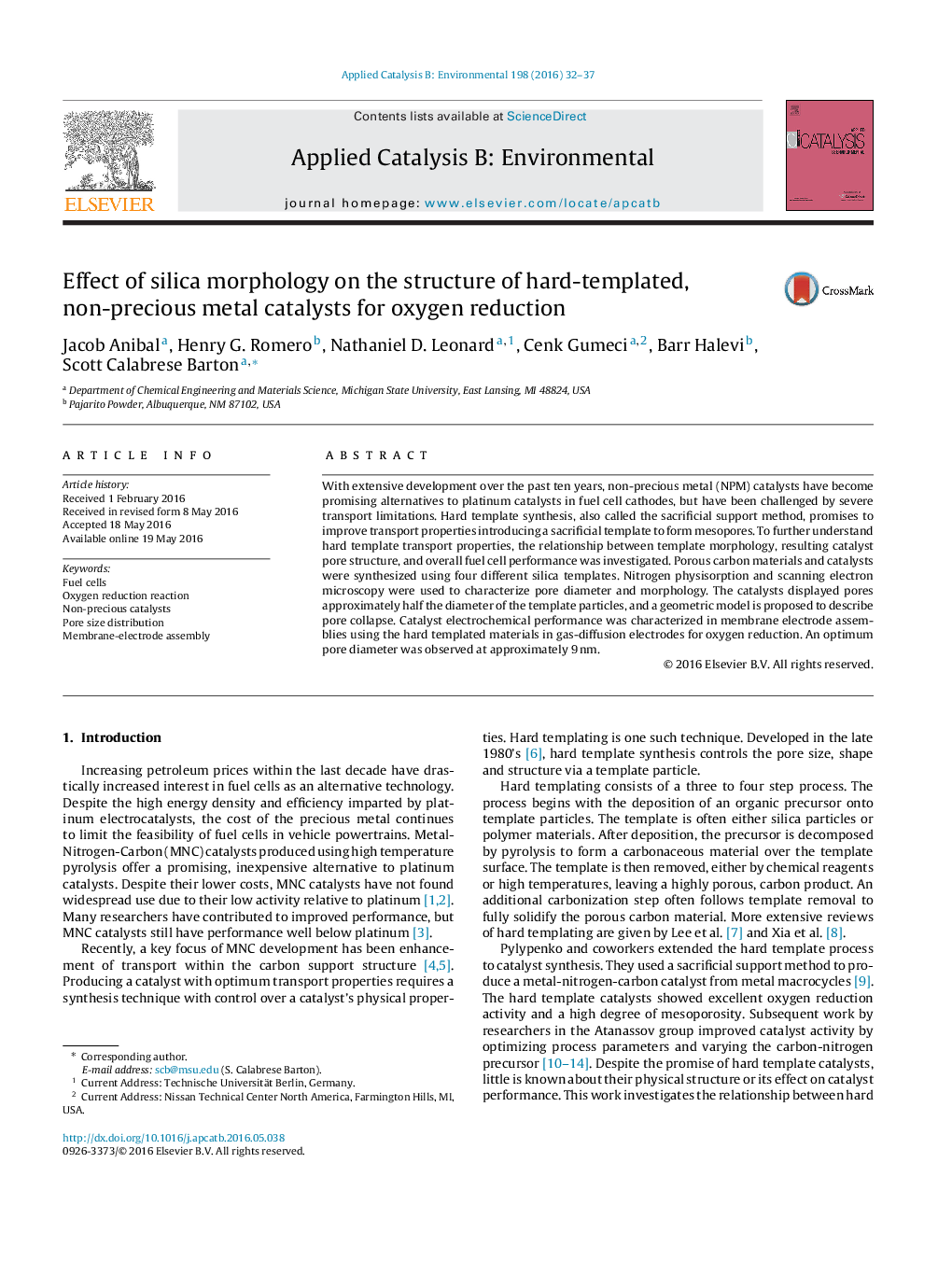| Article ID | Journal | Published Year | Pages | File Type |
|---|---|---|---|---|
| 44713 | Applied Catalysis B: Environmental | 2016 | 6 Pages |
•The Pore diameter of carbon materials templated by silica particles is approximately half that of particle diameter.•Simple geometric models explain this ∼2:1 size ratio.•A pore diameter optimum of ∼9 nm is found for oxygen reduction observed in membrane-electrode assemblies. This pore diameter corresponds to a particle diameter of ∼20 nm.
With extensive development over the past ten years, non-precious metal (NPM) catalysts have become promising alternatives to platinum catalysts in fuel cell cathodes, but have been challenged by severe transport limitations. Hard template synthesis, also called the sacrificial support method, promises to improve transport properties introducing a sacrificial template to form mesopores. To further understand hard template transport properties, the relationship between template morphology, resulting catalyst pore structure, and overall fuel cell performance was investigated. Porous carbon materials and catalysts were synthesized using four different silica templates. Nitrogen physisorption and scanning electron microscopy were used to characterize pore diameter and morphology. The catalysts displayed pores approximately half the diameter of the template particles, and a geometric model is proposed to describe pore collapse. Catalyst electrochemical performance was characterized in membrane electrode assemblies using the hard templated materials in gas-diffusion electrodes for oxygen reduction. An optimum pore diameter was observed at approximately 9 nm.
Graphical abstractFigure optionsDownload full-size imageDownload as PowerPoint slide
